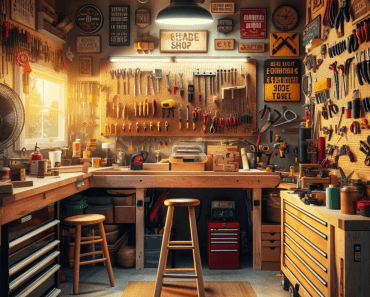Building your own shed can be an incredibly rewarding project. Whether you need extra storage space, a workshop, or simply a quiet retreat in your backyard, a DIY shed is the perfect solution. With the right shed plans and a bit of elbow grease, you can create a beautiful and functional addition to your home. In this comprehensive guide, we’ll walk you through everything you need to know about DIY shed plans, from choosing the right design to the final touches.

Why Choose DIY Shed Plans? 🛠️
Embarking on a DIY shed project offers numerous benefits. First and foremost, it allows you to customize the shed to your exact needs and preferences. You can choose the size, style, and features that will best suit your property and intended use. Additionally, building your own shed can be a cost-effective alternative to purchasing a pre-fabricated one. With some careful planning and resourcefulness, you can save a significant amount of money while gaining valuable hands-on experience.
Moreover, a DIY shed project provides a sense of accomplishment and pride. There’s something incredibly satisfying about creating something tangible with your own hands. It’s also a great opportunity to learn new skills and enhance your existing ones, whether it’s woodworking, roofing, or painting.
Choosing the Right DIY Shed Plans 🔨
Selecting the right shed plans is a crucial step in ensuring the success of your project. There are several factors to consider when choosing the plans that will guide your build.
Consider Your Needs and Purpose
The first step is to determine the primary purpose of your shed. Are you looking for a simple storage space for garden tools and equipment? Or do you need a more elaborate structure, like a workshop or a hobby room? Identifying your needs will help you choose the appropriate size and design.
For storage sheds, you’ll want to ensure there is ample space for shelving, hooks, and possibly even a workbench. If you’re planning to use the shed as a workshop, consider the need for electrical outlets, lighting, and ventilation. For a hobby room or retreat, you might want to include windows for natural light and insulation for comfort.
Assess Your Skill Level and Resources
Another important consideration is your own skill level and the resources you have available. Some shed plans are more complex and require advanced carpentry skills, while others are designed for beginners and can be completed with basic tools. Be honest about your abilities and choose plans that match your skill set.
It’s also essential to consider the materials and tools you’ll need. Make a detailed list and compare it with what you already have on hand. This will give you a clearer idea of the overall cost and whether you’ll need to invest in additional equipment.
Check Local Building Codes and Permits
Before you start building, it’s crucial to check your local building codes and regulations. Some areas have specific requirements for structures like sheds, including size limitations, setback requirements, and the need for permits. Make sure you comply with all local regulations to avoid any legal issues down the road.
Essential Tools and Materials for DIY Shed Building 🧰
Having the right tools and materials is key to a successful DIY shed project. Here’s a comprehensive list of what you’ll need:
Tools
- Measuring tape
- Level
- Carpenter’s square
- Circular saw
- Hammer
- Power drill
- Screwdrivers
- Chisels
- Nail gun (optional)
- Safety gear (gloves, goggles, ear protection)
Materials
- Lumber (for framing, siding, roofing)
- Nails and screws
- Concrete blocks or a concrete slab (for the foundation)
- Roofing materials (shingles, metal roofing)
- Siding (wood, vinyl, metal)
- Windows and doors
- Paint or stain
- Insulation (optional)
| Tool | Purpose |
|---|---|
| Measuring tape | Accurate measurements |
| Level | Ensuring structures are level |
| Carpenter’s square | Checking right angles |
| Circular saw | Cutting lumber |
| Hammer | Driving nails |
| Power drill | Drilling holes and driving screws |
| Screwdrivers | Tightening screws |
| Chisels | Carving and shaping wood |
| Nail gun | Quick nailing (optional) |
| Safety gear | Protecting yourself from injuries |
Important Note: Ensure you have all the necessary tools and materials before starting your project to avoid interruptions.
Step-by-Step Guide to Building Your DIY Shed 🏠
Now that you’ve chosen your shed plans and gathered your tools and materials, it’s time to start building. Follow these step-by-step instructions to create your own shed.
Preparing the Site
Before you start construction, you need to prepare the site where your shed will be located. Choose a level spot in your yard that provides easy access and is away from any potential water runoff areas.
- Clear the Area: Remove any grass, rocks, or debris from the site. You want a clean, level surface to work on.
- Mark the Perimeter: Use stakes and string to mark the perimeter of your shed. Double-check the measurements to ensure accuracy.
- Level the Ground: If the ground is uneven, use a shovel to level it out. You may need to add or remove soil to create a flat surface.
Building the Foundation
A strong foundation is essential for the stability and longevity of your shed. There are several options for shed foundations, including concrete slabs, concrete blocks, and gravel bases.
- Concrete Slab: This is the most durable option and provides a solid base. Pour the concrete and let it cure for at least 24 hours before proceeding.
- Concrete Blocks: Place concrete blocks at each corner and along the perimeter of your shed. Ensure they are level and properly spaced.
- Gravel Base: Spread a layer of gravel over the area and compact it. This option is suitable for smaller sheds and provides good drainage.
Framing the Shed
Framing is the process of building the skeleton of your shed. This includes the floor, walls, and roof.
- Build the Floor Frame: Use pressure-treated lumber for the floor frame. Assemble the frame on the ground and then attach the floor joists. Secure the frame to your foundation using anchors or bolts.
- Assemble the Wall Frames: Construct the wall frames on the ground. Use a carpenter’s square to ensure the corners are square. Once assembled, raise the walls and secure them to the floor frame.
- Install the Roof Trusses: Build or purchase pre-made roof trusses. Lift them into place and secure them to the top of the wall frames.
Adding Siding and Roofing
With the frame in place, you can now add the siding and roofing materials.
- Install the Siding: Attach your chosen siding material to the exterior of the shed. Start from the bottom and work your way up, ensuring each piece is level.
- Apply the Roofing: Lay down roofing felt and then attach your roofing material (shingles, metal panels, etc.). Start from the bottom edge of the roof and work your way up, overlapping each layer.
Installing Doors and Windows
Doors and windows add functionality and aesthetic appeal to your shed.
- Install the Windows: Cut openings in the wall frames for the windows. Secure the window frames in place and add any necessary trim.
- Hang the Door: Attach the door frame to the shed and ensure it is level. Hang the door on its hinges and add any necessary hardware.
Finishing Touches
The final step is to add any finishing touches to your shed.
- Paint or Stain: Apply paint or stain to protect the wood and enhance the appearance of your shed. Choose a color that complements your home and garden.
- Add Shelving and Storage: Install shelves, hooks, and other storage solutions inside your shed to maximize its functionality.
- Landscaping: Consider adding landscaping around your shed to blend it into your yard. Plant flowers, shrubs, or even a small garden to enhance its visual appeal.
Maintenance Tips for Your DIY Shed 🔧
To keep your shed in good condition, regular maintenance is essential. Here are some tips to help you maintain your DIY shed:
Regular Inspections
Perform regular inspections to check for any signs of damage or wear. Look for issues like rot, mold, or pest infestations. Early detection can prevent more significant problems down the line.
Cleaning and Painting
Keep your shed clean and free of debris. Sweep the floors, wipe down surfaces, and remove any clutter. Repaint or restain the exterior every few years to protect the wood and maintain its appearance.
Roof Maintenance
Check the roof for any damaged or missing shingles. Replace them promptly to prevent leaks. Clear any debris, such as leaves or branches, from the roof to prevent water buildup.
Addressing Repairs
Address any repairs promptly to prevent them from worsening. Replace damaged boards, fix loose screws, and reseal any gaps. Regular maintenance will extend the life of your shed and keep it looking great.
DIY Shed Plans: Final Thoughts 🏡
Building your own shed can be a fulfilling and practical project. With the right shed plans, tools, and materials, you can create a customized space that meets your needs and enhances your property. Whether you’re a seasoned DIY enthusiast or a beginner looking for a new challenge, this guide provides all the information you need to get started. Remember, the key to a successful DIY shed project is careful planning, attention to detail, and a bit of patience. Happy building!





